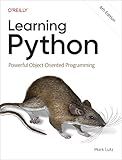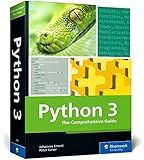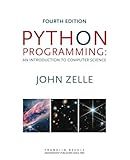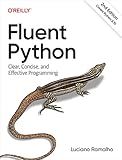Best Python Programming Guides to Buy in December 2025

Python Crash Course, 3rd Edition: A Hands-On, Project-Based Introduction to Programming



Python Programming for Beginners: The Complete Python Coding Crash Course - Boost Your Growth with an Innovative Ultra-Fast Learning Framework and Exclusive Hands-On Interactive Exercises & Projects



Python Programming Language: a QuickStudy Laminated Reference Guide



Learning Python: Powerful Object-Oriented Programming



Python 3: The Comprehensive Guide to Hands-On Python Programming (Rheinwerk Computing)



Python Programming: An Introduction to Computer Science, Fourth Edition



Fluent Python: Clear, Concise, and Effective Programming


To implement a custom dataset class in PyTorch, you can follow these steps:
- Import the necessary libraries: Begin by importing the required libraries, namely torch and torch.utils.data.Dataset.
- Create a custom dataset class: Define a class that inherits from torch.utils.data.Dataset. This class will represent your custom dataset and should override three essential methods: __init__, __len__, and __getitem__.
- In the __init__ method, initialize any variables or data required for your dataset. It sets up the underlying data structure and prepares the dataset for use.
- The __len__ method should return the total number of samples in your dataset.
- The __getitem__ method should return a sample from the dataset corresponding to the provided index. This method is used to retrieve individual samples by indexing the dataset object.
- Implement the required methods: Within the custom dataset class, implement the above-mentioned methods according to your specific dataset. Generally, you would read and preprocess your data in this section.
- Optionally, define any additional methods: Depending on your dataset and requirements, you can define additional methods to further process or manipulate the data.
- Load and use the custom dataset: After implementing the custom dataset class, you can create an instance of it and use it in your PyTorch code. You can instantiate the class and use it with a torch.utils.data.DataLoader to efficiently load and iterate over the dataset during training or evaluation.
By following the above steps, you can implement a custom dataset class in PyTorch to handle your specific data in a convenient and efficient manner.
What is the importance of shuffling data in a custom dataset class?
Shuffling data in a custom dataset class is important for several reasons:
- Reducing bias: Shuffling helps to reduce any biases that may be present in the original order of the data. For example, if the dataset is sorted by class labels or some other characteristic, the model may inadvertently learn to rely on the order of the data rather than the actual features. Shuffling the data ensures that the model sees a diverse range of examples during training.
- Improving generalization: Shuffling the data helps the model to generalize better to unseen examples. If the data is not shuffled, the model may become overfit to the specific order of the training examples. Shuffling ensures that the model is exposed to a random and representative subset of the data during each training epoch.
- Breaking dependencies: Shuffling helps in breaking any dependencies or patterns that may exist in the data. If there are any temporal or spatial dependencies in the data, shuffling the examples will prevent the model from inadvertently learning these dependencies and improve its ability to generalize to new examples.
- Mitigating overfitting: Shuffling ensures that each mini-batch used during training contains a random subset of examples from the dataset. This randomness helps to mitigate overfitting to specific examples or the inadvertent memorization of their order.
Overall, shuffling data in a custom dataset class is crucial for creating a more representative and diverse training set, reducing biases, improving generalization, breaking dependencies, and mitigating overfitting.
How to handle categorical variables in a custom dataset class?
When handling categorical variables in a custom dataset class, you can use various techniques depending on the specific requirements of your problem. Below are a few approaches you can consider:
- One-Hot Encoding: Convert each categorical variable into multiple binary variables (0/1) representing different categories. For example, if you have a variable "color" with values "red", "blue", and "green", you can create separate binary variables like "is_red", "is_blue", and "is_green". This approach allows models to understand the categorical variables as numerical features, but be cautious about the increase in dimensionality and potential issues with multicollinearity.
- Label Encoding: Assign numeric labels to each category in the dataset. For example, "red" can be encoded as 1, "blue" as 2, and "green" as 3. This method can be useful when the categories have an ordinal relationship or when using algorithms that can directly work with numeric inputs. However, it may introduce unintentional ordinality if the categories are nominal.
- Hashing Trick: Convert categorical variables into a fixed-size hash representation. For example, you can use the Python hash() function to convert each category into a hash value and then apply modulo division to map it to a fixed range. This technique can be helpful when dealing with a large number of categories, as it reduces the dimensionality compared to one-hot encoding. However, there is a small risk of hash collisions due to the hash function limitations.
- Embedding: Convert categorical variables into low-dimensional dense vectors using techniques like word embeddings (e.g., Word2Vec, GloVe) or learnable embeddings within a deep learning model. This approach can capture semantic relationships between categories but requires sufficient data and computational resources.
Remember to consider the characteristics of your dataset and the requirements of your machine learning model to choose the most appropriate handling technique for your categorical variables.
What are the commonly used data augmentation methods in a custom dataset class?
There are several commonly used data augmentation methods in a custom dataset class. Here are a few examples:
- Random flips and rotations: Randomly flipping images horizontally or vertically and rotating them by a certain angle can help increase the diversity of the dataset.
- Random crop and resize: Randomly cropping and resizing images can provide variations in the scale and content of the data.
- Color jitter: Applying random color transformations such as brightness, contrast, saturation, and hue adjustments can introduce changes in the appearance of the images.
- Gaussian noise: Adding random Gaussian noise to the images can simulate variations in lighting conditions or noise in real-world scenarios.
- Random scaling: Randomly scaling the image size up or down can help simulate different image resolutions and object sizes.
- Elastic deformations: Applying elastic deformations to the images can introduce small distortions and deformations, making the dataset more robust to similar variations in real-world scenarios.
- Random occlusions: Adding random occlusions or cutouts to the images can simulate partial occlusions or missing information in the data.
- Random translations: Randomly translating the images horizontally or vertically can simulate small variations in object positions.
These are just a few examples, and depending on the specifics of your custom dataset and the problem domain, you can also explore other data augmentation techniques to further enhance the diversity and generalization capabilities of your dataset.
What is PyTorch?
PyTorch is an open-source machine learning library and framework developed primarily by Facebook's AI Research lab. It provides a flexible and efficient way to build deep learning models, focusing on dynamic computation graphs and imperative programming. PyTorch enables researchers and developers to easily create and experiment with neural networks, and it is widely used in both academia and industry for tasks like computer vision, natural language processing, and reinforcement learning. It supports different neural network architectures, automatic differentiation, distributed computing, and offers a Python-based interface that makes it user-friendly and accessible.
